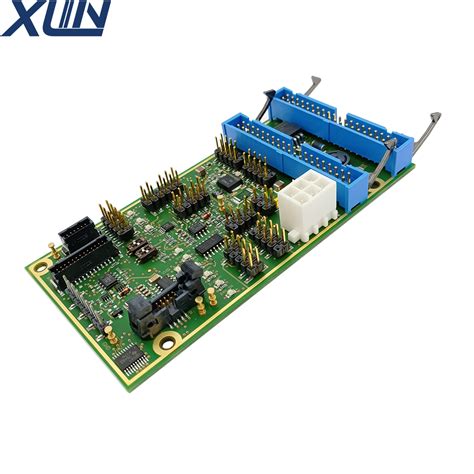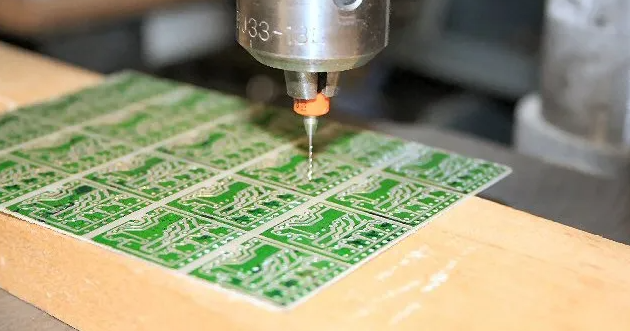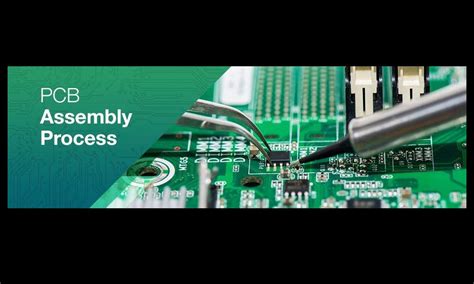Smart SMT Assembly Tools for Modern Production Lines
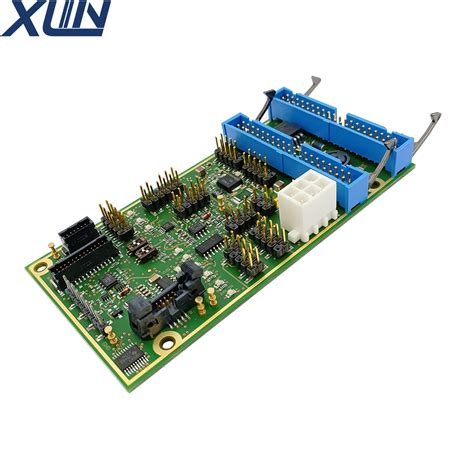
Key Takeaways
The integration of smart SMT assembly equipment into modern production lines has transformed PCB assembly processes by merging precision engineering with intelligent automation. These systems enable manufacturers to achieve sub-micron accuracy in component placement, reducing errors in PCBA workflows by up to 70% compared to manual methods. Advanced vision systems and machine learning algorithms ensure real-time adjustments, critical for handling miniaturized components in high-density designs.
| Feature | Traditional Equipment | Smart SMT Systems |
|---|---|---|
| Placement Accuracy | ±50 µm | ±15 µm |
| Throughput (CPH) | 8,000–12,000 | 25,000–40,000 |
| Error Detection | Post-process | Real-time AI |
| Changeover Flexibility | 2–4 hours | <30 minutes |
Tip: Optimizing PCB design for SMT assembly, such as standardizing pad sizes and minimizing component variants, can enhance equipment efficiency by 20–35%. Learn more in this guide on SMT design optimization.
Modern SMT assembly equipment leverages closed-loop feedback mechanisms to maintain consistent solder paste deposition, addressing challenges like tombstoning or skewing in PCBA lines. High-speed modular configurations allow simultaneous processing of multiple board types, making them ideal for mixed-volume production. By automating feeder replenishment and calibration, downtime between batches drops significantly, enabling 24/7 operation with minimal human intervention. This shift not only accelerates time-to-market but also aligns with Industry 4.0 standards for data-driven manufacturing ecosystems.

Smart SMT Tools Revolutionize Manufacturing
The integration of smart SMT assembly equipment into modern electronics production has redefined manufacturing efficiency. By leveraging advanced automation, these systems streamline PCB assembly processes, ensuring precision and repeatability that manual operations struggle to match. For instance, automated pick-and-place machines now handle miniature components with micron-level accuracy, reducing errors in PCBA workflows by over 60%. This shift not only accelerates throughput but also minimizes material waste, aligning with sustainable manufacturing goals.
Transitioning to smart SMT tools also enhances adaptability. Real-time monitoring systems embedded in modern equipment enable instant adjustments during PCB assembly, addressing defects before they escalate. Such capabilities are critical for industries demanding high-volume production, where even minor inefficiencies can compound into significant delays. Companies adopting these solutions, like those sourcing from electronics manufacturing equipment providers, report faster time-to-market and improved ROI.
Moreover, the convergence of IoT and machine learning in PCBA systems allows predictive maintenance, slashing downtime by anticipating component wear. As factories increasingly prioritize agility and scalability, smart SMT tools emerge as indispensable assets, bridging the gap between traditional assembly lines and Industry 4.0 standards. This evolution underscores a broader trend: manufacturing success now hinges on seamlessly integrating cutting-edge technology with operational expertise.

Precision Automation in SMT Assembly
Modern PCB assembly workflows demand unprecedented accuracy, driving the adoption of intelligent automation in SMT assembly equipment. Advanced systems now integrate machine vision and AI-driven algorithms to achieve micron-level placement accuracy for components as small as 01005 packages. These innovations eliminate manual calibration errors while ensuring consistent solder paste deposition during PCBA processes.
For instance, high-precision pick-and-place machines equipped with real-time feedback loops adjust placement parameters dynamically, compensating for thermal expansion or board warping. This level of automation is critical for complex multilayer boards used in IoT devices and automotive electronics, where even minor misalignments can compromise functionality.
Beyond placement accuracy, automated optical inspection (AOI) systems now utilize deep learning to detect defects invisible to the human eye, reducing rework rates by up to 90%. Combined with closed-loop process control, these tools create self-optimizing production lines that maintain ±25µm repeatability across 24/7 operations. Such precision not only accelerates throughput but also enables manufacturers to meet stringent quality standards for aerospace and medical PCBA applications.
As SMT assembly equipment evolves, the integration of collaborative robots (cobots) further refines material handling, ensuring seamless transitions between stencil printing, component placement, and reflow soldering stages. This interconnected ecosystem exemplifies how smart manufacturing principles are redefining precision in electronics production.

Enhancing Speed with Smart SMT Equipment
Modern PCB assembly processes demand unprecedented efficiency, and advanced SMT assembly equipment delivers precisely that. By integrating high-speed pick-and-place systems and real-time process monitoring, these tools drastically reduce cycle times while maintaining PCBA quality. For instance, next-generation machines equipped with vision-guided robotics achieve placement speeds exceeding 100,000 components per hour, ensuring rapid throughput for high-volume production.
The synergy between adaptive conveyor systems and smart automation minimizes idle periods between assembly stages. Modular designs allow seamless reconfiguration for diverse product batches, eliminating manual adjustments that traditionally slowed workflows. Additionally, machine-learning algorithms optimize feeder setups and component sequencing, further accelerating line performance.
This acceleration is critical in industries like consumer electronics, where shorter time-to-market cycles are non-negotiable. By coupling high-speed SMT systems with IoT-enabled analytics, manufacturers gain granular insights into bottlenecks, enabling proactive adjustments. The result? A 20-30% reduction in production lead times for complex PCBA projects, without compromising precision. As production scales, these innovations ensure speed remains a competitive advantage, not a constraint, in modern electronics manufacturing.
Automated Solutions for Electronics Production
Modern PCB assembly processes demand seamless integration of speed, accuracy, and adaptability. Advanced SMT assembly equipment now incorporates intelligent automation to address these needs, particularly in PCBA workflows. By leveraging robotic placement systems and AI-driven vision inspection, manufacturers achieve near-zero error rates while handling components as small as 01005 packages. These systems synchronize with production line software, enabling real-time adjustments to accommodate design changes or material shortages without halting operations.
A critical advantage lies in flexible manufacturing capabilities. For instance, modular SMT assembly equipment can switch between high-mix, low-volume PCBA tasks and mass production runs within minutes. This agility reduces downtime and supports just-in-time manufacturing models. Additionally, automated feeders and conveyors optimize material flow, minimizing human intervention in repetitive tasks like solder paste application or reflow profiling.
Integration with IoT platforms further enhances traceability, allowing engineers to monitor PCB assembly metrics—such as cycle times and defect patterns—across multiple facilities. Such data-driven insights empower proactive maintenance, reducing unplanned downtime by up to 30%. As industries push toward smart factories, the role of self-correcting SMT assembly equipment becomes pivotal in sustaining competitive, future-ready production ecosystems.

Optimizing Workflows with SMT Technology
By integrating SMT assembly equipment into PCB assembly processes, manufacturers achieve unprecedented synchronization between design intent and production execution. Advanced pick-and-place systems and reflow ovens minimize manual intervention, enabling seamless transitions from PCBA prototyping to high-volume manufacturing. This automation reduces bottlenecks in material handling, component alignment, and thermal profiling—key pain points in traditional workflows.
Real-time data analytics embedded within modern SMT tools allow operators to monitor throughput rates and defect densities, dynamically adjusting parameters to maintain optimal yield. For instance, closed-loop feedback mechanisms correct placement inaccuracies within microns, ensuring consistent quality across batches. Such precision is critical when assembling complex boards with micro-BGA components or fine-pitch ICs, where even minor deviations risk functional failures.
Moreover, intelligent software suites unify PCB assembly stages—from solder paste deposition to final inspection—into a single digital thread. This integration eliminates redundant quality checks, shortening cycle times by up to 30% in mixed-technology PCBA lines. By prioritizing predictive maintenance and energy-efficient operation, these systems also address sustainability goals without compromising output. The result? A leaner, more responsive production ecosystem that scales effortlessly with evolving market demands.
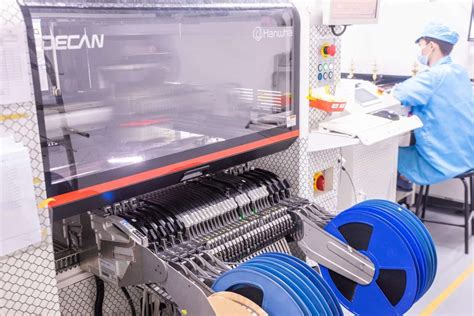
Next-Gen SMT Equipment Advancements
The evolution of SMT assembly equipment is driving unprecedented efficiency in electronics manufacturing. Modern systems now integrate AI-driven optical inspection and high-speed SMT systems capable of placing over 200,000 components per hour, reducing human error while boosting throughput. At the core of these advancements lies enhanced PCB assembly precision, where micron-level accuracy ensures flawless placement of miniature components, even in high-density PCBA designs.
Adaptive process control further refines production by dynamically adjusting parameters like solder paste volume and reflow profiles, optimizing yield rates across diverse product batches. These innovations align with the growing demand for smart automation in modern production lines, where IoT-enabled devices relay real-time performance data to centralized platforms. For example, predictive maintenance algorithms analyze equipment behavior to preempt downtime, ensuring uninterrupted PCB assembly workflows.
Another critical development is the rise of modular SMT equipment, allowing manufacturers to scale operations seamlessly. Hybrid machines combining pick-and-place, soldering, and inspection stages streamline PCBA processes, cutting cycle times by up to 30%. By integrating these technologies, manufacturers achieve tighter alignment with Industry 4.0 standards, transforming traditional factories into agile, data-driven ecosystems.
Smart Automation for Modern Production Lines
The integration of smart automation into SMT assembly equipment has redefined efficiency in electronics manufacturing. By leveraging advanced robotics, machine learning algorithms, and IoT-enabled systems, modern production lines now achieve unparalleled precision in PCB assembly workflows. These tools autonomously adjust parameters in real time, minimizing human intervention while optimizing placement accuracy for high-density components. For instance, automated optical inspection (AOI) systems paired with AI-driven defect detection ensure near-zero error rates in PCBA processes, reducing rework and material waste.
Transitioning from traditional setups, smart SMT machines enable seamless communication between assembly stages, synchronizing pick-and-place operations, soldering, and testing. This synergy not only accelerates throughput but also supports scalable production for diverse product batches. Adaptive feeders and modular designs further enhance flexibility, allowing rapid reconfiguration for new board layouts without downtime.
Crucially, these advancements align with the demand for sustainable manufacturing. Energy-efficient motors and predictive maintenance algorithms extend equipment lifespan while lowering operational costs. As industries prioritize agility, smart SMT assembly equipment emerges as the backbone of next-gen electronics production, bridging the gap between precision, speed, and scalability.
High-Speed SMT Systems for Efficiency
Modern PCB assembly workflows demand rapid throughput without compromising accuracy, making high-speed SMT systems indispensable in electronics manufacturing. These systems integrate advanced pick-and-place mechanisms and vision-guided alignment to achieve placement speeds exceeding 50,000 components per hour. By leveraging servo-driven feeders and multi-head gantry designs, manufacturers can streamline PCBA processes while maintaining micron-level precision—critical for densely packed boards with fine-pitch components.
The shift toward smart factories has further optimized these systems with real-time data analytics, enabling predictive maintenance and dynamic adjustments to reduce downtime. For instance, leading SMT equipment brands now offer modular configurations that scale with production needs, allowing seamless integration into existing lines. This adaptability ensures consistent output quality even during high-volume runs of complex surface-mount devices (SMDs).
Moreover, energy-efficient designs in modern SMT systems minimize power consumption while maximizing uptime, aligning with sustainable manufacturing goals. As PCB assembly evolves, the synergy between speed and precision in these systems continues to redefine efficiency benchmarks, empowering manufacturers to meet tighter deadlines without sacrificing reliability.
Conclusion
The integration of smart SMT assembly equipment into modern production lines marks a transformative shift in electronics manufacturing. By combining precision automation with high-speed capabilities, these systems address the escalating demands for accuracy and efficiency in PCB assembly workflows. Advanced SMT tools not only streamline PCBA processes but also minimize human error, ensuring consistent quality across high-volume production cycles.
As industries evolve, the adoption of next-generation SMT technology becomes critical for maintaining competitive parity. Manufacturers leveraging automated SMT solutions report measurable improvements in throughput, particularly when optimizing workflows for complex, multi-layered boards. For instance, auctioned SMT manufacturing assets highlight the growing market for upgrading legacy systems to smart, interconnected platforms.
Ultimately, the convergence of intelligent SMT equipment with data-driven analytics creates a foundation for agile, future-ready production environments. Businesses prioritizing these innovations position themselves to meet both current and emerging challenges in electronics fabrication, ensuring scalability while reducing operational bottlenecks. The strategic deployment of SMT assembly tools remains a cornerstone for achieving sustainable growth in an increasingly automated industrial landscape.
FAQs
How does SMT assembly equipment improve precision in PCB assembly?
Modern SMT assembly equipment integrates advanced vision systems and AI-driven calibration to achieve micron-level accuracy, critical for complex PCBA designs. These tools minimize human error, ensuring consistent placement of components even in high-density layouts.
What role do smart SMT systems play in high-speed production environments?
Automated feeders, real-time monitoring, and multi-head pick-and-place mechanisms enable SMT assembly equipment to handle 50,000+ components per hour. This accelerates PCB assembly timelines while maintaining strict quality standards, ideal for industries like automotive and consumer electronics.
Can existing production lines integrate smart SMT tools without major overhauls?
Yes. Modular designs in next-gen SMT assembly equipment allow seamless integration with legacy systems. Manufacturers can upgrade specific stages—such as solder paste application or reflow soldering—to optimize workflows incrementally.
How does automation in SMT address challenges in mixed-technology PCBA?
Smart systems use adaptive programming to manage both surface-mount and through-hole components on the same board. Dual-conveyor configurations enable parallel processing, reducing bottlenecks in hybrid PCB assembly projects.
What maintenance practices ensure longevity of SMT machinery?
Regular calibration, nozzle cleaning, and software updates are essential. Many advanced systems feature self-diagnostic tools that predict wear-and-tear, minimizing downtime in PCBA operations.
Explore Customized SMT Solutions for Your Production Line
For tailored PCB assembly strategies and cutting-edge SMT assembly equipment, please click here to consult with experts at AndwinPCB.

